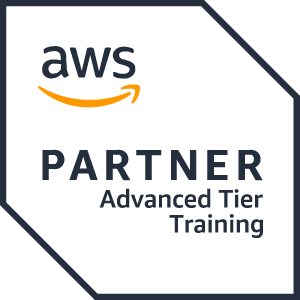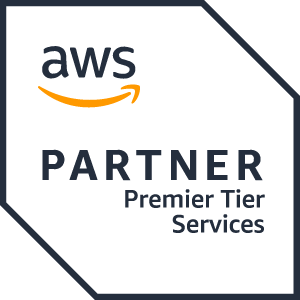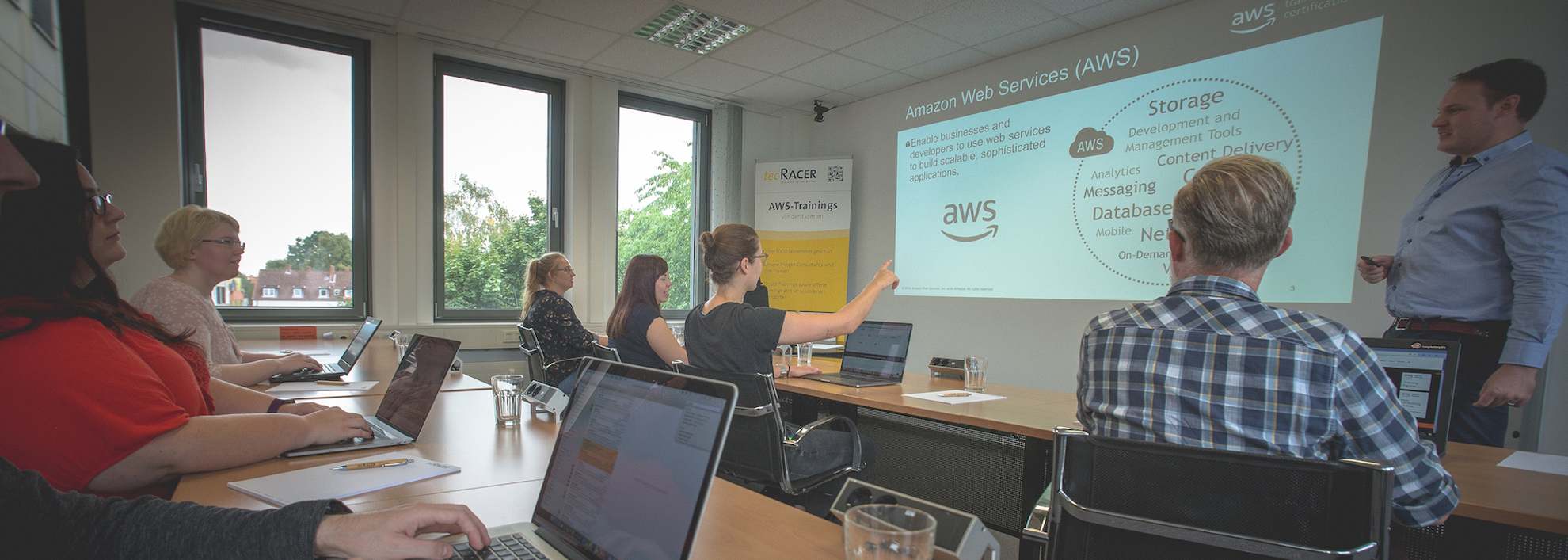Cloud Operations on AWS with AWS Jam
-
Aws Advanced Training Partner
-
Aws Premium Consuting Partner
Cloud Operations on AWS with AWS Jam
Please find our upcoming course dates at the end of this page!
Course description
This course teaches systems operators and anyone performing cloud operations functions how to manage and operate automatable and repeatable deployments of networks and systems on AWS. You will learn about cloud operations functions, such as installing, configuring, automating, monitoring, securing, maintaining, and troubleshooting these services, networks, and systems. The course also covers specific AWS features, tools, and best practices related to these functions.
The final day is an AWS Jam, a gamified event, with teams competing to score points by completing a series of challenges according to established best practices based on concepts covered in the course. You get to experience a wide range of AWS services in a series of real-world scenarios that represent common operational and troubleshooting tasks. The end result is developing, enhancing, and validating your skillsets in the AWS Cloud through real-world problem solving, exploring new services, features, and understanding how they interoperate.
Course objectives
In this course, you will learn to:
- Identify the AWS services that support the different phases of Operational Excellence, an AWS Well-Architected Framework pillar
- Manage access to AWS resources using AWS accounts and organizations and AWS Identity and Access Management (IAM)
- Maintain an inventory of in-use AWS resources by using AWS services, such as AWS Systems Manager, AWS CloudTrail, and AWS Config
- Develop a resource deployment strategy using metadata tags, Amazon Machine Images (AMIs), and AWS Control Tower to deploy and maintain an AWS cloud environment
- Automate resource deployment by using AWS services, such as AWS CloudFormation and AWS Service Catalog
- Use AWS services to manage AWS resources through CloudOps lifecycle processes, such as deployments and patches
- Configure a highly available cloud environment that uses AWS services, such as Amazon Route 53 and Elastic Load Balancing, to route traffic for optimal latency and performance
- Configure AWS Auto Scaling and Amazon EC2 Auto Scaling to scale out your cloud environment based on demand
- Use Amazon CloudWatch and associated features, such as alarms, dashboards, and widgets, to monitor your cloud environment
- Manage permissions and track activity in your cloud environment by using AWS services, such as AWS CloudTrail and AWS Config
- Deploy your resources to an Amazon Virtual Private Cloud (Amazon VPC), establish necessary connectivity to your Amazon VPC, and protect your resources from disruptions of service
- State the purpose, benefits, and appropriate use cases for mountable storage in your AWS Cloud environment
- Explain the operational characteristics of object storage in the AWS Cloud, including Amazon Simple Storage Service (Amazon S3) and Amazon S3 Glacier
- Build a comprehensive cost model to help gather, optimize, and predict your cloud costs by using services such as AWS Cost Explorer and the AWS Cost & Usage Report
- Work in a team environment to solve real AWS use-case challenges in an AWS Jam
Intended audience
This course is intended for:
- System administrators and operators who are operating in the AWS Cloud
- Informational technology workers who want to increase their cloud operations knowledge
Prerequisites
We recommend that attendees of this course have:
- Successfully completed the AWS Technical Essentials course
- A background in software development or systems administration
- Proficiency in maintaining operating systems at the command line, such as shell scripting in Linux environments or cmd/PowerShell in Windows
- Basic knowledge of networking protocols (TCP/IP, HTTP)
Activities
This course includes:
- instructor presentations
- demonstrations
- hands-on labs
- group knowledge checks
- team-based gamified challenge
Course duration / Price
- 4 Days
- € 2,285.00 (excl. tax) per person (DE)
Course outline
-
Day 1
- Module 1: Introduction to Cloud Operations on AWS
- What is Cloud Operations
- AWS Well-Architected Framework
- AWS Well-Architected Tool
- Module 2: Access Management
- AWS Identity and Access Management (IAM)
- Resources, accounts, and AWS Organizations
- Module 3: System Discovery
- Methods to interact with AWS services
- Tools for automating resource discovery
- Inventory with AWS Systems Manager and AWS Config
- Hands-On Lab: Auditing AWS Resources with AWS Systems Manager and AWS Config
- Module 4: Deploy and Update Resources
- Cloud Operations in deployments
- Tagging strategies
- Deployment using Amazon Machine Images (AMIs)
- Deployment using AWS Control Tower
- Module 5: Automate Resource Deployment
- Deployment using AWS CloudFormation
- Deployment using AWS Service Catalog
- Hands-On Lab: Infrastructure as Code
- Module 1: Introduction to Cloud Operations on AWS
-
Day 2
- Module 6: Manage Resources
- AWS Systems Manager
- Hands-On Lab: Operations as Code
- Module 7: Configure Highly Available Systems
- Distributing traffic with Elastic Load Balancing
- Amazon Route 53
- Module 8: Automate Scaling
- Scaling with AWS Auto Scaling
- Scaling with Spot Instances
- Managing licenses with AWS License Manager
- Module 9: Monitor and Maintain System Health
- Monitoring and maintaining healthy workloads
- Monitoring AWS infrastructure
- Monitoring applications
- Hands-On Lab: Monitor Applications and Infrastructure
- Module 10: Data Security and System Auditing
- Maintaining a strong identity and access foundation
- Implementing detection mechanisms
- Automating incident remediation
- Module 6: Manage Resources
-
Day 3
- Module 11: Operate Secure and Resilient Networks
- Building a secure Amazon Virtual Private Cloud (Amazon VPC)
- Networking beyond the VPC
- Module 12: Mountable Storage
- Configuring Amazon Elastic Block Store (Amazon EBS)
- Sizing Amazon EBS volumes for performance
- Using Amazon EBS snapshots
- Using Amazon Data Lifecycle Manager to manage your AWS resources
- Creating backup and data recovery plans
- Configuring shared file system storage
- Hands-On Lab: Automating with AWS Backup for Archiving and Recovery
- Module 13: Object Storage
- Deploying Amazon Simple Storage Service (Amazon S3)
- Managing storage lifecycles on Amazon S3
- Module 14: Cost Reporting, Alerts, and Optimization
- Gaining AWS cost awareness
- Using control mechanisms for cost management
- Optimizing your AWS spend and usage
- Hands-On Lab: Capstone lab for CloudOps
- Module 11: Operate Secure and Resilient Networks
-
Day 4
- AWS Jam
- Participate in team-based challenges in a real AWS environment
- Compete with your colleagues in a gamified, hands-on learning experience
- Apply your learning from the course on various AWS services
- AWS Jam
IMPORTANT: Please bring your notebook (Windows, Linux or Mac) to our trainings. If this is not possible, please contact us in advance.
Course materials are in English, on request also in German (if available).
The Course language is German, on request also in English.




